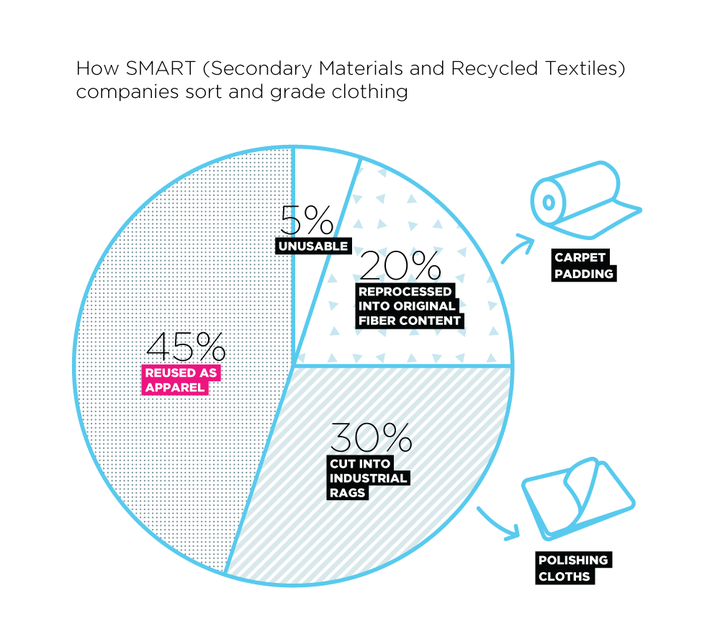Article written by Amalia Webber for Loomia - Republished by Janett Martinez
Every year, over 10 million tons of clothing are donated to charities, churches, thrift shops, and big metal bins in parking lots all across America. During the start of the new year, these donations reach their peak. Families toss old clothes in favor of new, and aim to start the year with less clutter from unused items. We’ve all heard ourselves say “Out with the old and in with the new” but where is “out” anyway?

We live in a culture where our wardrobes rotate as frequently as the seasons. The prevailing fast fashion system satiates our desire to stay stylish and creative, but ignores the environmental and ethical impact of those decisions. What seems like an easy, virtuous act actually has lasting impact beyond the piles of polyester at your local secondhand store. Fortunately, according to the Secondary Materials and Recycled Textiles Association, half of all clothing donated will be worn again. The rest of it, though, is mostly recycled into cheap textile products whose original state couldn’t sustain long term wear and whose quality leaves few options for recyclable products. This process of transformation has a monetary and environmental cost well beyond the price-tag we see.
Carpet padding, construction insulation, and rags are just a few examples of how clothes are ground down and reprocessed to make new products. While these destinations are favorable over landfills, they do not come cheap. Don't be easily appeased by the big metal bins that state "donation for reuse". Those bins are often privately owned by textile waste recycling companies that reprocess those threads at the expense of the environment, for huge profits for themselves and only a fraction to charities they buy from.

Not all recycled textiles go into the hands of private companies, though. Some are made into blankets by aid organizations to warm those struck by tragedy. These, too, go through an even lengthier process of transformation that involves collection in western churches and charity shops, reprocessing in textile-manufacturing mills in India, being regulated by International aid organizations for quality and safety control, then being used as blankets for victims of international disasters. These recycled blankets will eventually fall apart due to shoddy quality of their source material, but are produced in a steady stream as a result of constant textile waste production. The carbon footprint of this booming industry is not to be forgotten in lieu of charitable efforts.
Community thrift shops like Salvation Army and Goodwill see far too many donations to be putting everything back out on the floor. Only about 20% of donated clothes will be worn again by someone in the community, due to the ever decreasing quality of fast fashion. While you might not mind what your clothes are recycled into, its important to think of the collateral damage that happens to our earth during this seemingly simple process. If we put as much effort into doing away with clothes as we do shopping for them, the earth will be a healthier place.
To ensure that your has-beens go to a final destination you’re okay with, consider donating them back to the retailers themselves. H&M, Patagonia, Levis, North Face and others have in-store recycling programs with an emphasis on transparency. Or, donate clothing directly to areas of crisis and seek out charities that make their recycling programs clear. Refugee.org and Rescue.org take donations of clothing that goes directly to those in need. Others may use profits from donations to better serve their aid efforts. Valuing our earth and valuing our clothes can go hand in hand if we put in the effort to follow our threads.